There’s chili… and then there’s legendary chili. The kind that earns you bragging rights at potlucks, gets devoured during game day, and makes your kitchen smell like a cozy, flavor-packed paradise.
Whether you’re a kitchen rookie or a seasoned stew savant, making exceptional chili isn’t just about tossing ingredients into a pot—it’s about building flavor, texture, and balance with purpose.
This guide isn’t your basic recipe roundup. We’re diving deep into the must-know moves—from choosing the juiciest cuts of meat to adding a secret square of dark chocolate that’ll leave people asking, “What’s your secret ingredient?”
1. Selecting the Right Meat
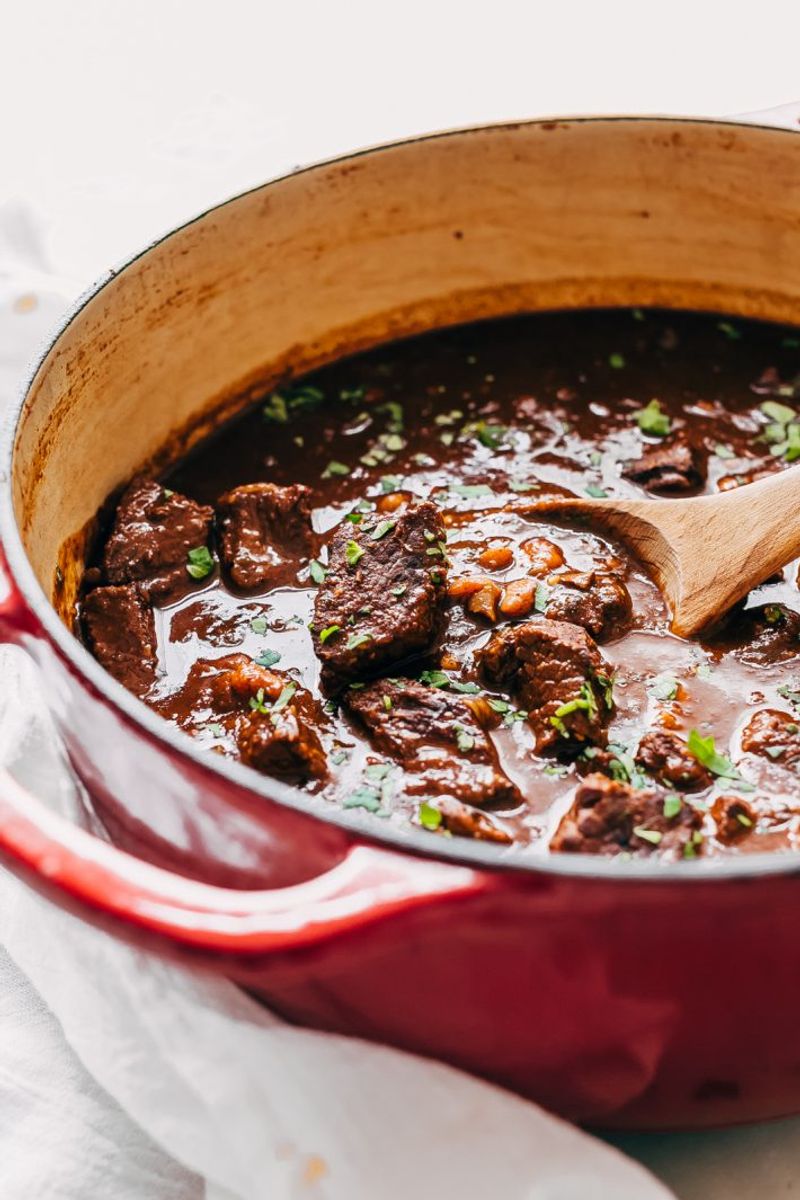
Choosing the right meat sets the foundation for your chili. Ground beef is a classic choice, but don’t shy away from experimenting with different cuts. Chuck and brisket add a rich flavor that can elevate your dish. Each type of meat brings its own texture and taste, so consider your audience’s preference.
For those who enjoy a hearty bite, chunks of beef provide a satisfying chew. Meanwhile, ground turkey offers a lighter option without compromising on taste.
Remember, the meat should complement the other ingredients, not overpower them. A balance of flavors is key to an unforgettable chili experience.
2. Mastering the Spice Mix
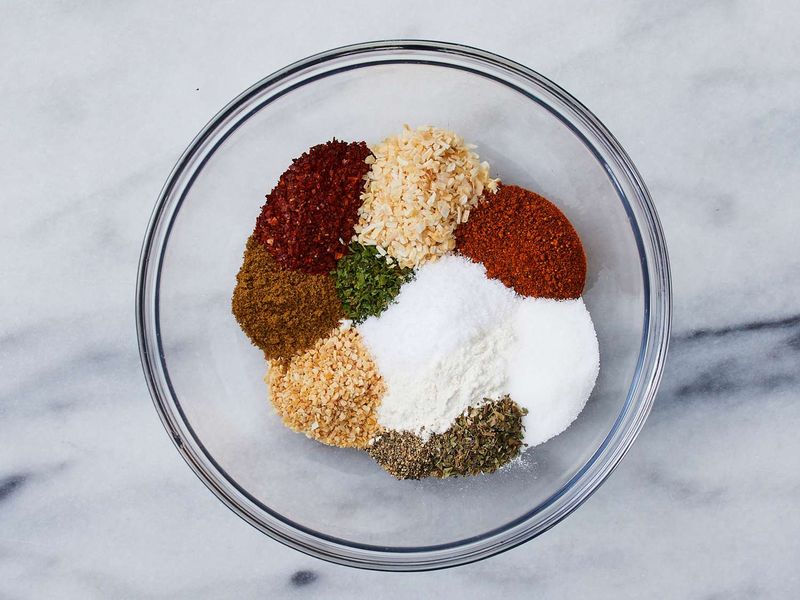
Spices are the heart and soul of any chili dish. The right blend can transform a simple pot of chili into a culinary masterpiece. Begin with chili powder as your base, then layer in flavors with cumin, paprika, and garlic powder. Each spice adds depth, creating a symphony of tastes.
Don’t forget the heat! Adjust the amount of cayenne pepper to suit your spice tolerance. A dash of cinnamon or cocoa powder can surprise your palate with warmth and complexity.
Tasting as you go ensures the balance is just right, making each bite a delight. Experimenting with spices allows for a personalized touch, turning your chili into a unique signature dish.
3. Perfecting the Texture

Texture plays a crucial role in the overall enjoyment of chili. Achieving the perfect consistency requires attention to detail. Start by sautéing onions and garlic until they are soft and fragrant. Next, add your meat and brown it thoroughly for a robust flavor.
The choice of beans can also affect texture—some prefer kidney beans, while others opt for pinto or black beans. Adding crushed tomatoes or tomato paste helps thicken the mixture.
Simmering on low heat allows flavors to meld beautifully, resulting in a rich, hearty dish. A slow cook brings out the best in each ingredient, making the wait worthwhile.
4. Balancing Flavors with Acidity

Balancing acidity is a secret weapon in chili making. A splash of vinegar or squeeze of lime can brighten the flavors, cutting through the richness. Tomatoes naturally add acidity, but sometimes an extra boost is needed.
Experiment with different acidic elements to find what complements your chili best. Lemon juice offers a fresh zing, while balsamic vinegar provides a subtle sweetness.
Each adjustment should enhance the dish, not overshadow it. The goal is a harmonious blend where every component shines.
5. Serving with the Perfect Garnish
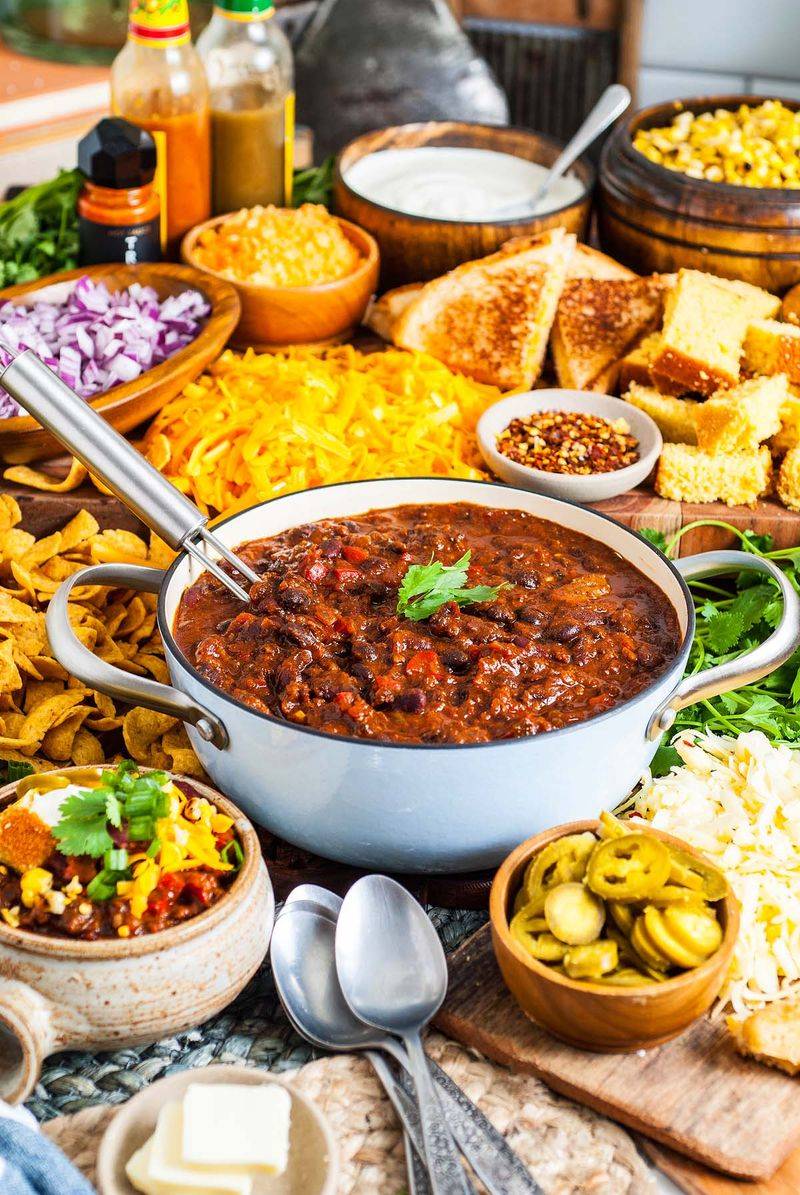
Garnishing your chili adds the final flourish, transforming it from a hearty meal to an eye-catching feast. A dollop of sour cream or a sprinkle of shredded cheese can introduce new textures and flavors.
Fresh herbs like cilantro or parsley provide a burst of color and freshness, elevating the dish’s visual appeal. Don’t forget the crispy crunch of tortilla chips or a slice of cornbread on the side.
Each garnish should complement not only the taste but also the presentation. This is the chance to get creative and personalize your chili bowl.
6. Utilizing Fresh Vegetables
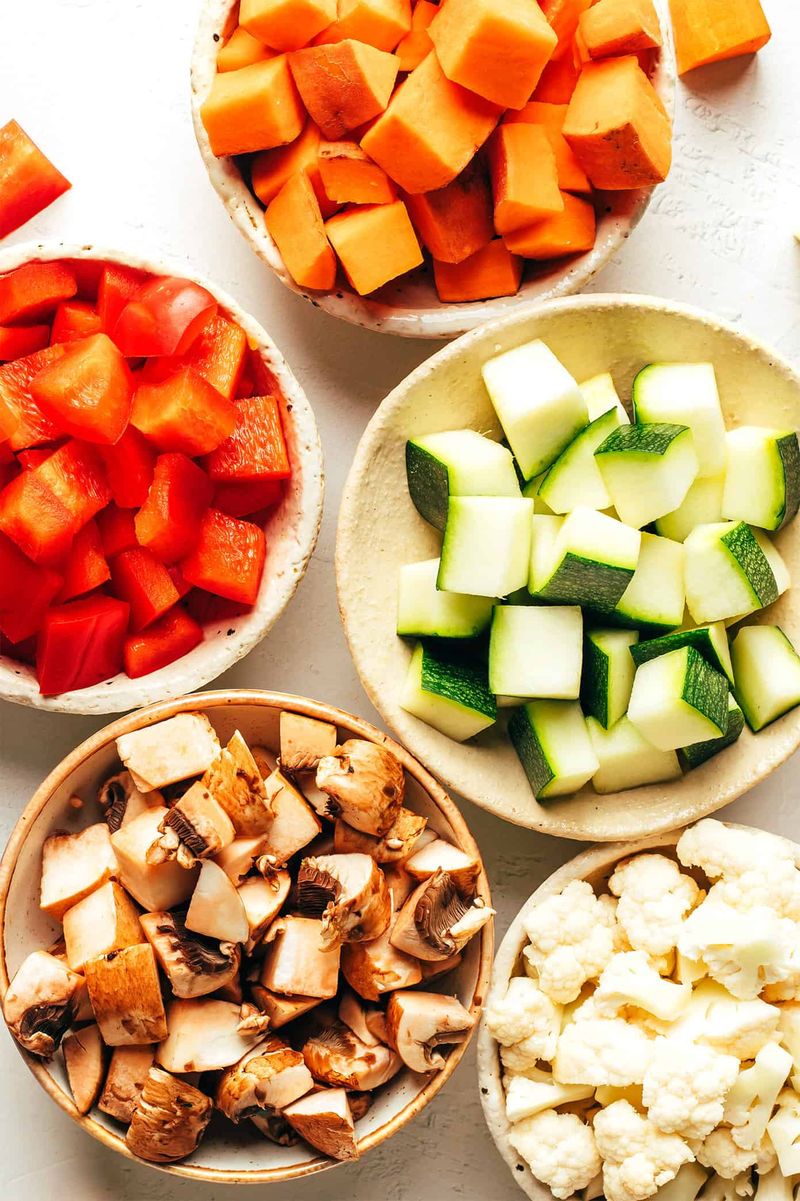
Fresh vegetables bring an unparalleled depth of flavor to any chili dish. Imagine the aroma of sautéed onions and garlic mingling with bell peppers. Fresh tomatoes add natural sweetness and acidity, balancing the richness of meats and beans.
Choose vibrant bell peppers for a colorful touch, and consider adding jalapeños for a gentle kick.
Even in slow-cooked recipes, fresh ingredients infuse authenticity and freshness. The natural flavors of vegetables enhance each bite, making the chili a celebration of wholesome goodness. Experiment with seasonal vegetables to bring unique twists to your dish.
7. Slow Cooking for Flavor Infusion

Slow cooking is a game-changer in chili preparation. The long, gentle heat allows flavors to meld harmoniously. Picture a pot simmering away, filling your home with warmth and anticipation.
As hours pass, beans become tender, and meats absorb the rich, spiced broth.
This method also offers convenience; start your chili in the morning, and let it develop throughout the day.
Busy day? Slow cooking requires minimal attention. The result is deeply flavored, with layers of taste that delight the palate.
8. Incorporating Dark Chocolate
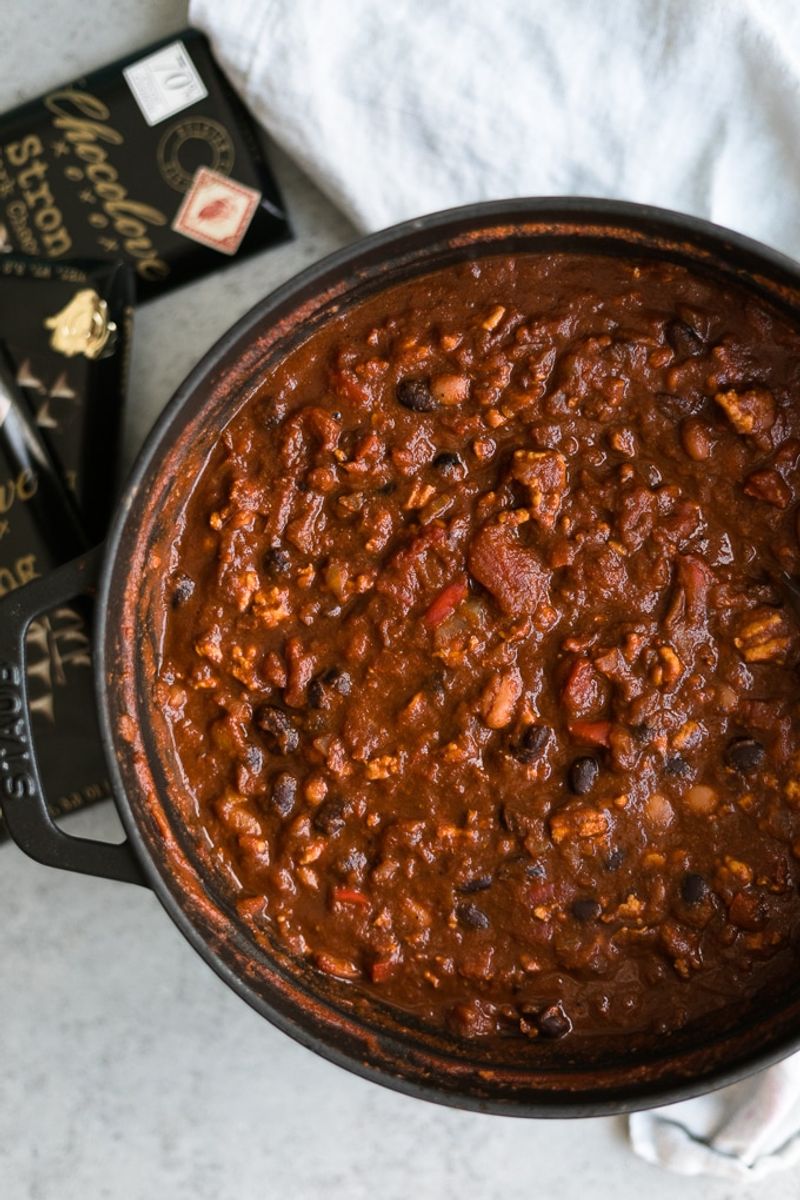
Incorporating dark chocolate into chili may sound unconventional, but it adds an intriguing depth. The bitterness of chocolate complements spicy and savory elements, creating a harmonious blend.
Start with a small amount, tasting as you go, to avoid overpowering the dish.
This luxurious ingredient brings complexity, enhancing the overall flavor profile. Not only does it add richness, but it also balances heat with a subtle sweetness. Embrace the unexpected, and watch your chili transform into a gourmet delight.
Leave a comment